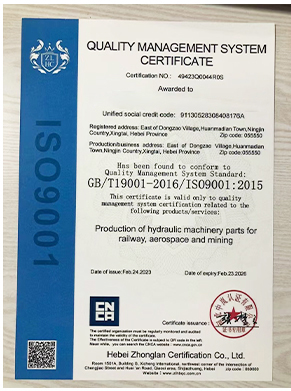- Arabic
- French
- Russian
- Spanish
- Portuguese
- Turkish
- Armenian
- English
- Albanian
- Amharic
- Azerbaijani
- Basque
- Belarusian
- Bengali
- Bosnian
- Bulgarian
- Catalan
- Cebuano
- Corsican
- Croatian
- Czech
- Danish
- Dutch
- Afrikaans
- Esperanto
- Estonian
- Finnish
- Frisian
- Galician
- Georgian
- German
- Greek
- Gujarati
- Haitian Creole
- hausa
- hawaiian
- Hebrew
- Hindi
- Miao
- Hungarian
- Icelandic
- igbo
- Indonesian
- irish
- Italian
- Japanese
- Javanese
- Kannada
- kazakh
- Khmer
- Rwandese
- Korean
- Kurdish
- Kyrgyz
- Lao
- Latin
- Latvian
- Lithuanian
- Luxembourgish
- Macedonian
- Malgashi
- Malay
- Malayalam
- Maltese
- Maori
- Marathi
- Mongolian
- Myanmar
- Nepali
- Norwegian
- Norwegian
- Occitan
- Pashto
- Persian
- Polish
- Punjabi
- Romanian
- Samoan
- Scottish Gaelic
- Serbian
- Sesotho
- Shona
- Sindhi
- Sinhala
- Slovak
- Slovenian
- Somali
- Sundanese
- Swahili
- Swedish
- Tagalog
- Tajik
- Tamil
- Tatar
- Telugu
- Thai
- Turkmen
- Ukrainian
- Urdu
- Uighur
- Uzbek
- Vietnamese
- Welsh
- Bantu
- Yiddish
- Yoruba
- Zulu
des . 14, 2024 07:14 Back to list
motor belts
Understanding Motor Belts The Unsung Heroes of Mechanical Systems
Motor belts are crucial components in many mechanical systems, yet they often go unnoticed until they fail. These simple yet effective tools play a vital role in transmitting power and motion, ensuring that machines operate smoothly and efficiently. In this article, we will explore the types, functions, applications, and maintenance aspects of motor belts, shedding light on their importance in everyday machinery.
What are Motor Belts?
Motor belts are flexible loops made of various materials, including rubber, polyurethane, and specialty composites, designed to connect two or more rotating shafts. They function primarily to transfer power from one component to another within machinery. In essence, they serve as a conduit for energy, enabling the movement of various parts by harnessing the rotational force of motors.
Types of Motor Belts
There are several types of motor belts, each tailored for specific applications and operating conditions. The three most common types are
1. V-Belts Characterized by their trapezoidal cross-section, V-belts are designed to fit into the grooves of pulleys. They are widely used in various applications ranging from lawnmowers to industrial machinery due to their ability to handle heavy loads and their resistance to stretching and slipping.
2. Timing Belts Featuring teeth along their inner surface, timing belts synchronize the rotation of shafts in applications where precise timing is critical. They are commonly found in automotive engines and can help ensure that the engine's valves open and close at the correct intervals.
3. Poly-V Belts These belts combine the benefits of V-belts and timing belts, featuring multiple smaller ribs that increase contact area with the pulleys. This design enhances the belt's ability to handle high torque and improve energy efficiency. Poly-V belts are often used in compact spaces where high performance is required.
Applications of Motor Belts
motor belts

Motor belts find applications across numerous industries and devices
. In the automotive sector, timing belts are essential in engine systems, while V-belts power accessories like alternators and air conditioning compressors. In the manufacturing industry, motor belts drive conveyor systems, pumps, and other machinery critical for production processes. Additionally, they're prevalent in home appliances like washing machines, dryers, and kitchen equipment.The versatility of motor belts makes them indispensable in both industrial and consumer markets. They facilitate the seamless functioning of a vast array of devices, from small gadgets to large machines.
Maintenance of Motor Belts
Proper maintenance of motor belts is crucial to ensure longevity and prevent system failure. Here are a few key practices for maintaining these vital components
1. Regular Inspections Periodic checks can help identify signs of wear, such as cracks, fraying, or stretching. Early detection of faults allows for timely replacements, minimizing downtime.
2. Proper Tensioning Ensuring the correct tension in motor belts is vital for their performance. Too loose a belt can slip, while a belt that is too tight may cause excessive wear on both the belt and the pulleys.
3. Environmental Considerations Motor belts can be adversely affected by extreme temperatures, oil, dirt, and other environmental factors. Keeping the belts clean and free from contaminants will prolong their lifespan.
4. Replacement Even with proper maintenance, motor belts have a finite lifespan. Regular scheduling of replacements based on usage and manufacturer recommendations is essential to prevent unexpected failures.
Conclusion
Motor belts may seem like simple components, but their role in the functionality of machines is profound. Their ability to transfer power and ensure smooth operation across various applications highlights their significance in both industrial and domestic contexts. By understanding the types, functions, and maintenance needs of motor belts, we can appreciate the engineering marvels that keep our world in motion. Investing time in their upkeep ensures reliability, efficiency, and performance in the machines we rely on every day.
-
Korean Auto Parts Timing Belt 24312-37500 For Hyundai/Kia
NewsMar.07,2025
-
7PK2300 90916-T2024 RIBBED BELT POLY V BELT PK BELT
NewsMar.07,2025
-
Chinese Auto Belt Factory 310-2M-22 For BMW/Mercedes-Benz
NewsMar.07,2025
-
Chinese Auto Belt Factory 310-2M-22 For BMW/Mercedes-Benz
NewsMar.07,2025
-
90916-02660 PK Belt 6PK1680 For Toyota
NewsMar.07,2025
-
drive belt serpentine belt
NewsMar.07,2025

